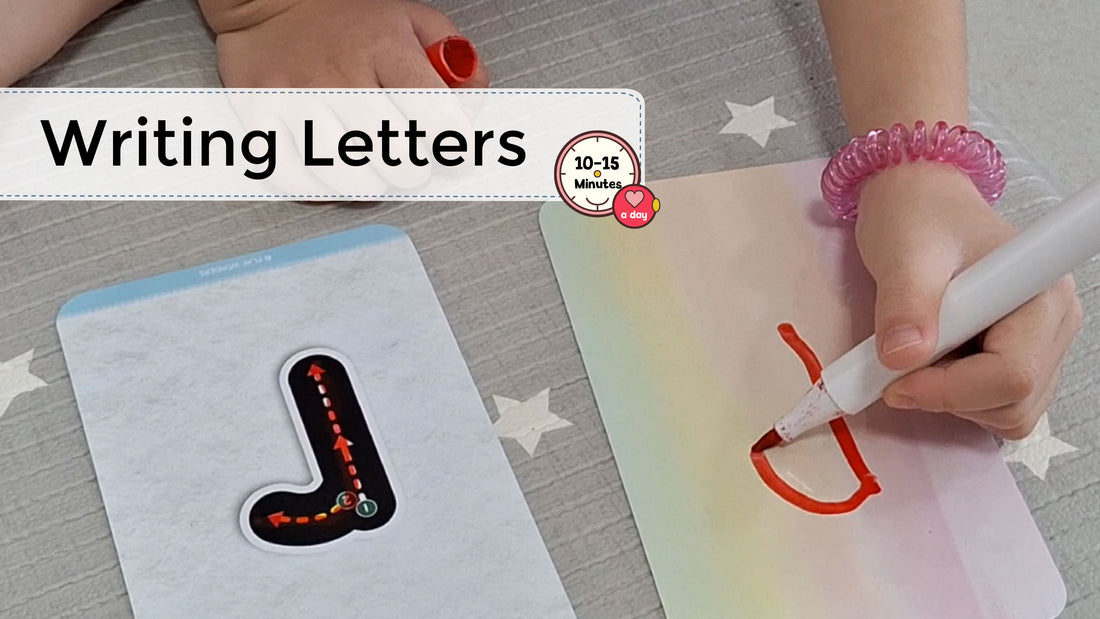
Copying Letters: What Comes After Tracing?
Share
Yay! Your child can trace letters and that is a big milestone. But I know the next question that often pops into parents’ minds: What’s next?
My simple answer? Encourage your child to copy the letters.
Sounds easy, right? But here’s the thing… copying letters without guidance can be a real struggle for kids. And I’ve seen this many times in my teaching journey.
Why Copying Letters Can Be Tricky
1. Children Don’t Know Where to Start
When kids move from tracing to copying, many of them are unsure of where to begin. They might guess and start in the wrong place—like drawing an “A” from the bottom instead of the top. This leads to wobbly, inconsistent letters.
2. Incorrect Stroke Order Becomes a Habit
Without guidance, kids may form letters out of order. Take the letter b for example. Instead of starting with the line, they might draw the circle first, then try to attach the line. Or worse, they might write it backwards.
What happens then?
- The letter looks awkward and uneven.
- Writing becomes slower and harder to read.
- The wrong habit sticks, and extra effort is needed to undo habits!
3. Frustration → Loss of Confidence
When kids keep “getting it wrong,” they get frustrated. And that frustration chips away at their confidence. Suddenly, writing isn’t fun anymore and feels like a chore..
Four Practical Tips to Help Your Child Copy Letters
Here are some simple ways you can make copying letters easier (and more fun!) at home:
1. Keep Alphabet Tracing Cards Nearby
Think of these as your child’s little “cheat sheet.” Having tracing cards on the table gives them a clear reference whenever they’re unsure. Over time, kids learn to self-correct and develop independence in writing.
2. Model the Letter Formation
Show them first! Trace over the start dots while describing your strokes out loud:
👉 “Start at the dot, go down, then curve around.”
Kids learn so much just by watching and hearing the process.
3. Use Multi-Sensory Activities
Before jumping into pencil and paper, let kids “feel” the letters. Try:
- Tracing letters in sand, salt trays, or playdough.
- Using markers on tracing cards.
- Finger-tracing textured letters.
These hands-on activities make the shapes stick in their memory.
4. Practice in Short, Fun Bursts
Writing doesn’t have to mean sitting for 30 minutes straight. With my 5-year-old, I often do two 10-minute activities in different spots around the house.
Mix things up with:
- Flashcard storytelling
- Letter-connecting games
- Racing a timer
- Arts & crafts with letters
And don’t forget to always celebrate their wins! A little cheer goes a long way in building a love for learning.
My Thoughts
Copying letters is not just about writing. It is about building confidence, creating strong habits, and making learning enjoyable.
So, grab those tracing cards, sprinkle in some fun, keep sessions short, and watch your child’s writing skills grow. You will be amazed at how quickly they gain confidence.
